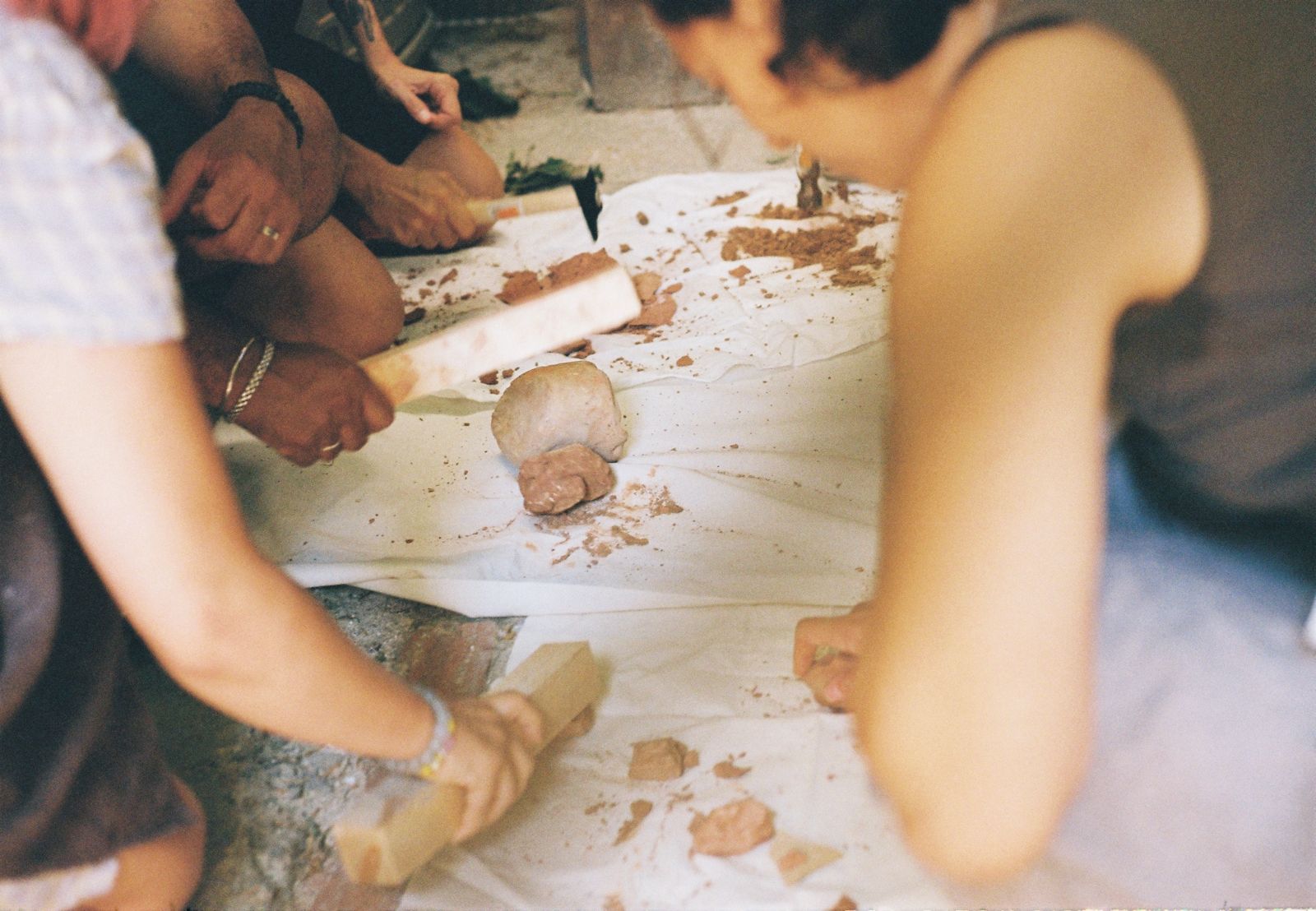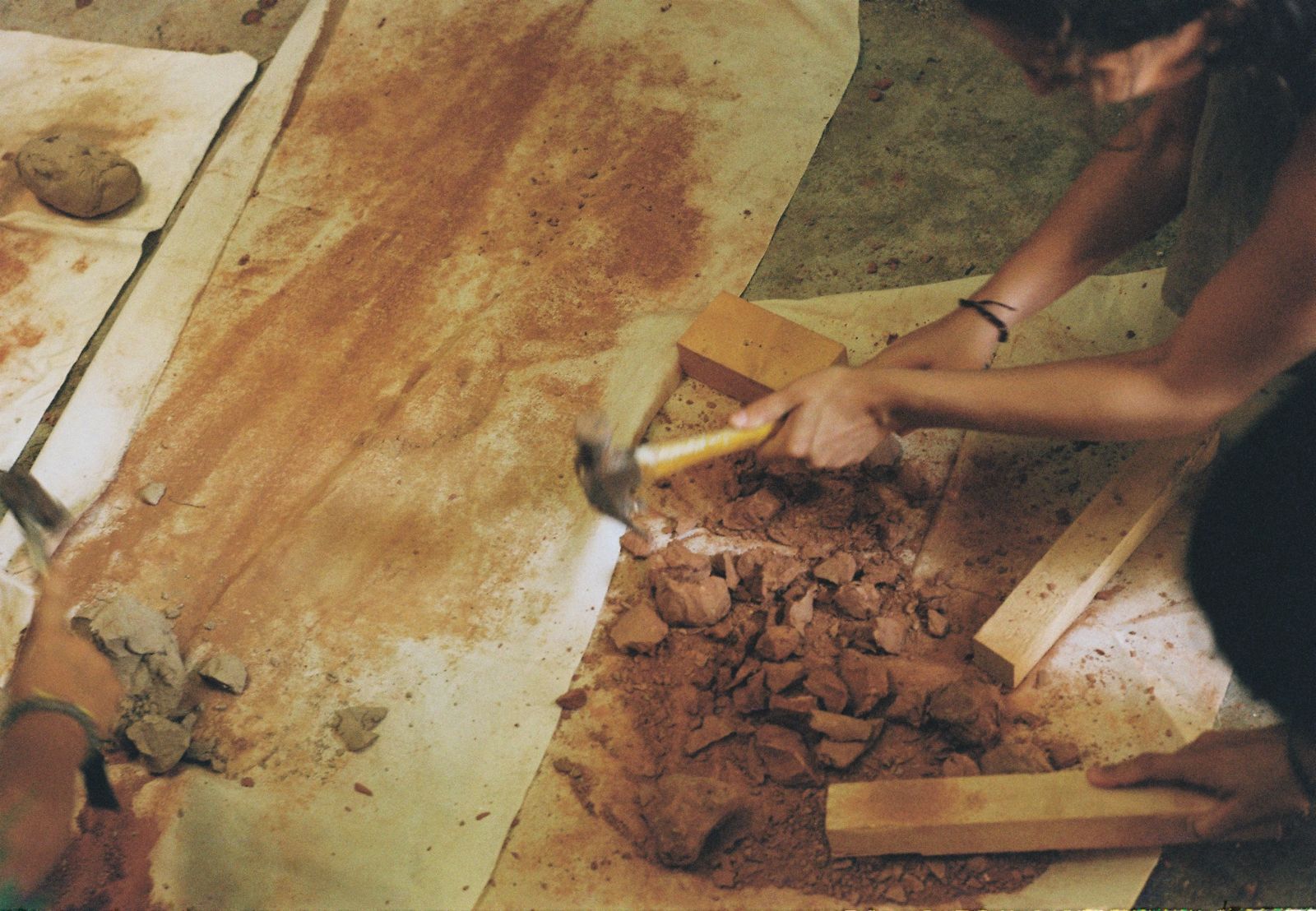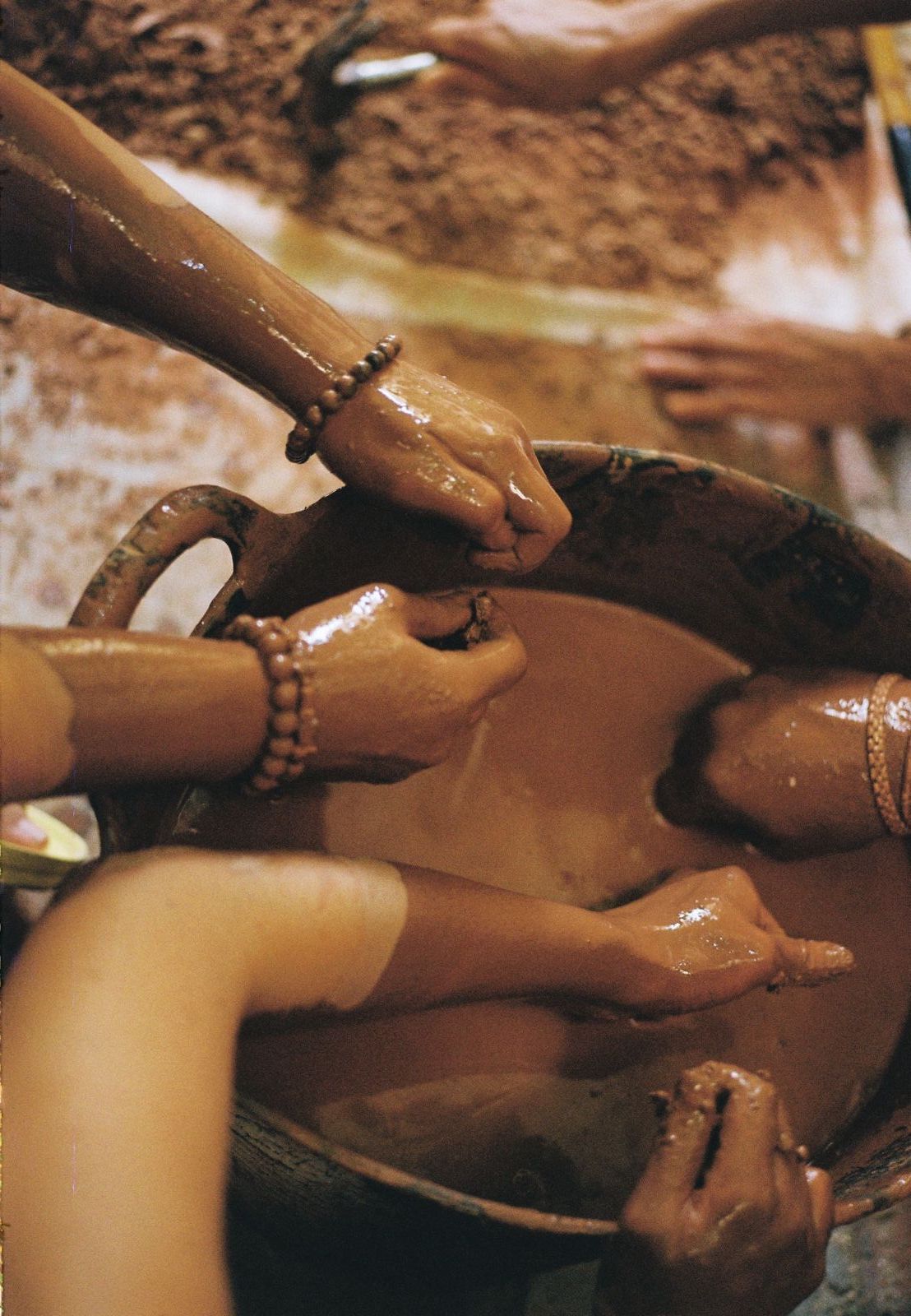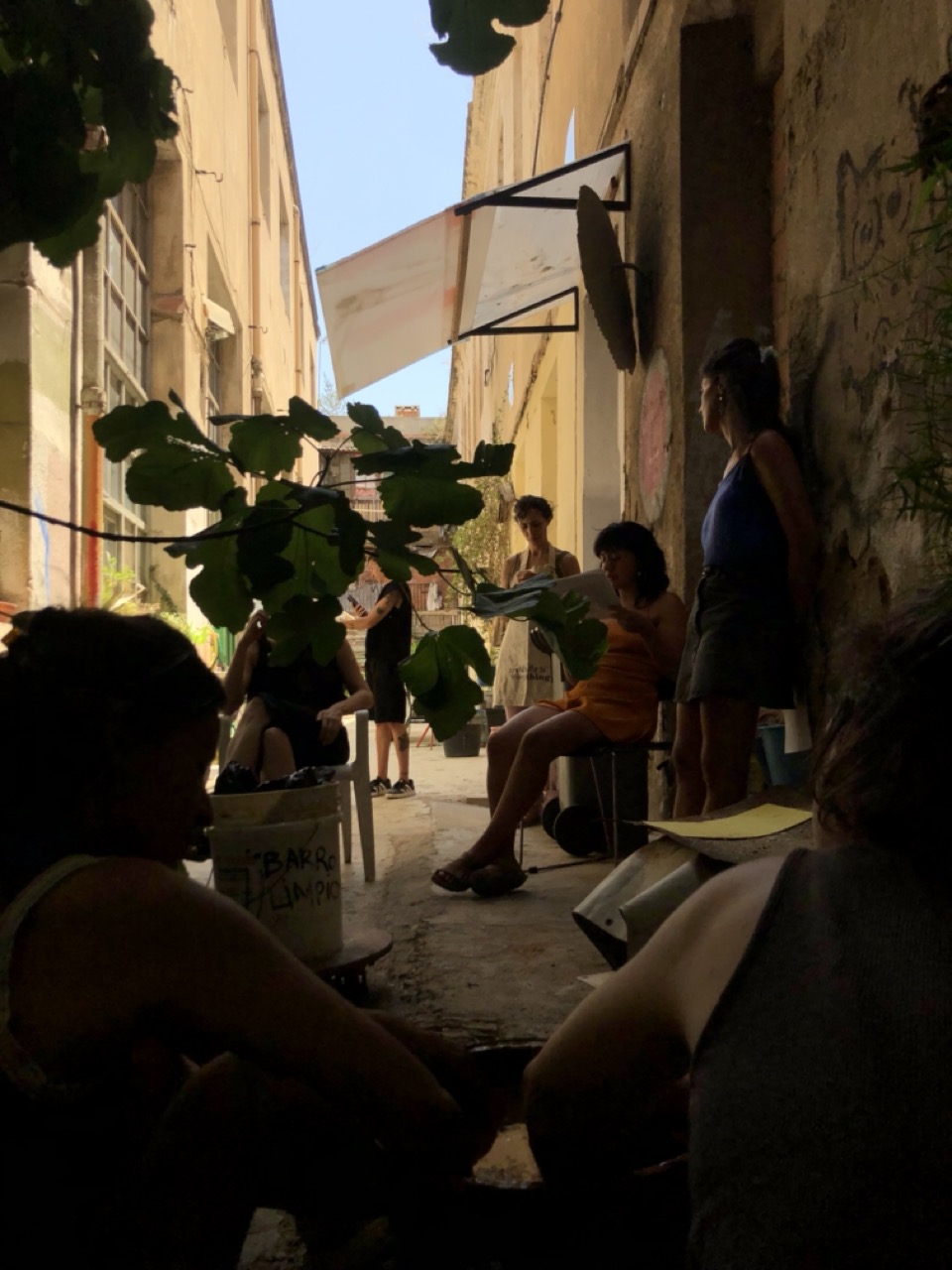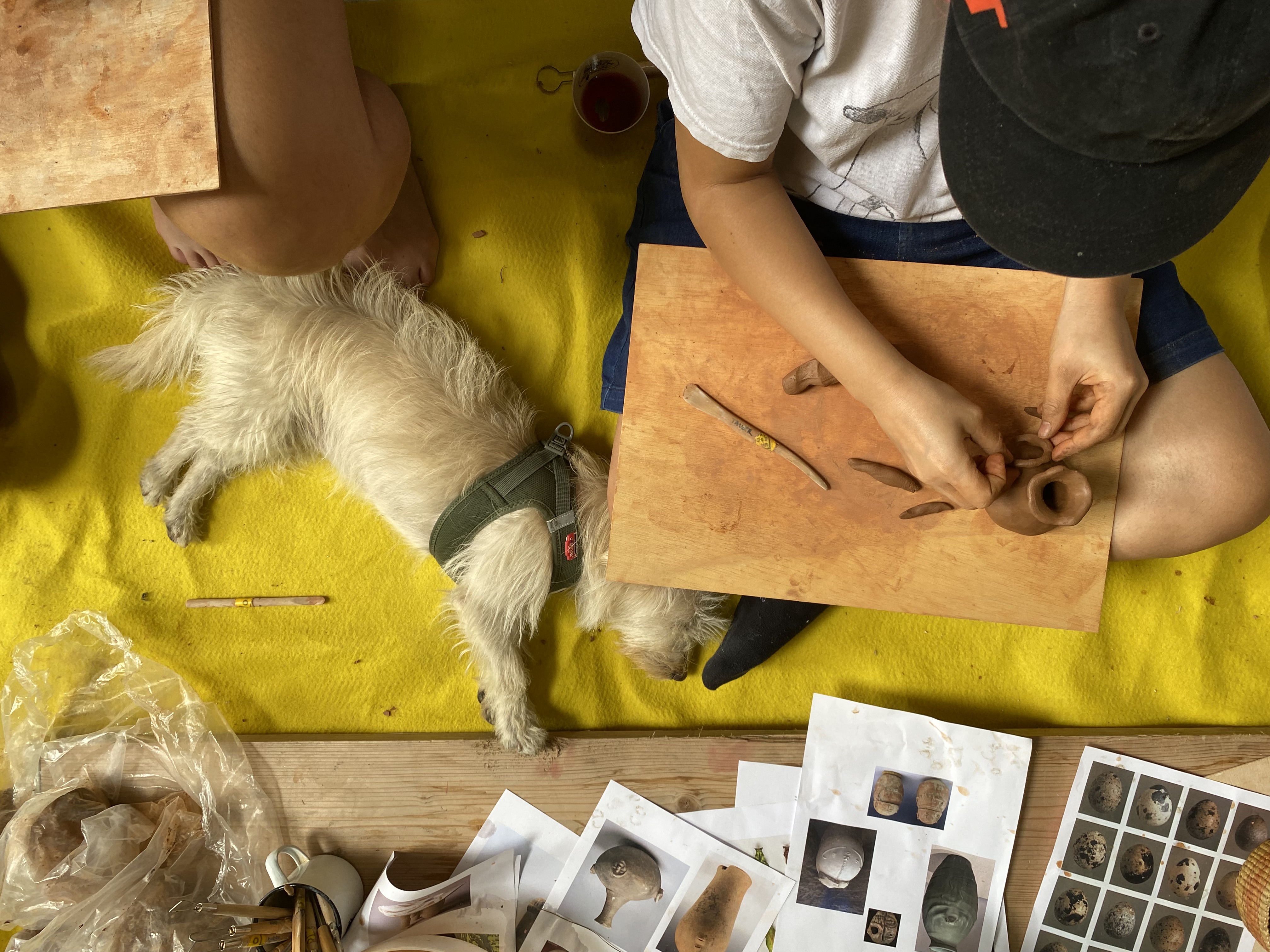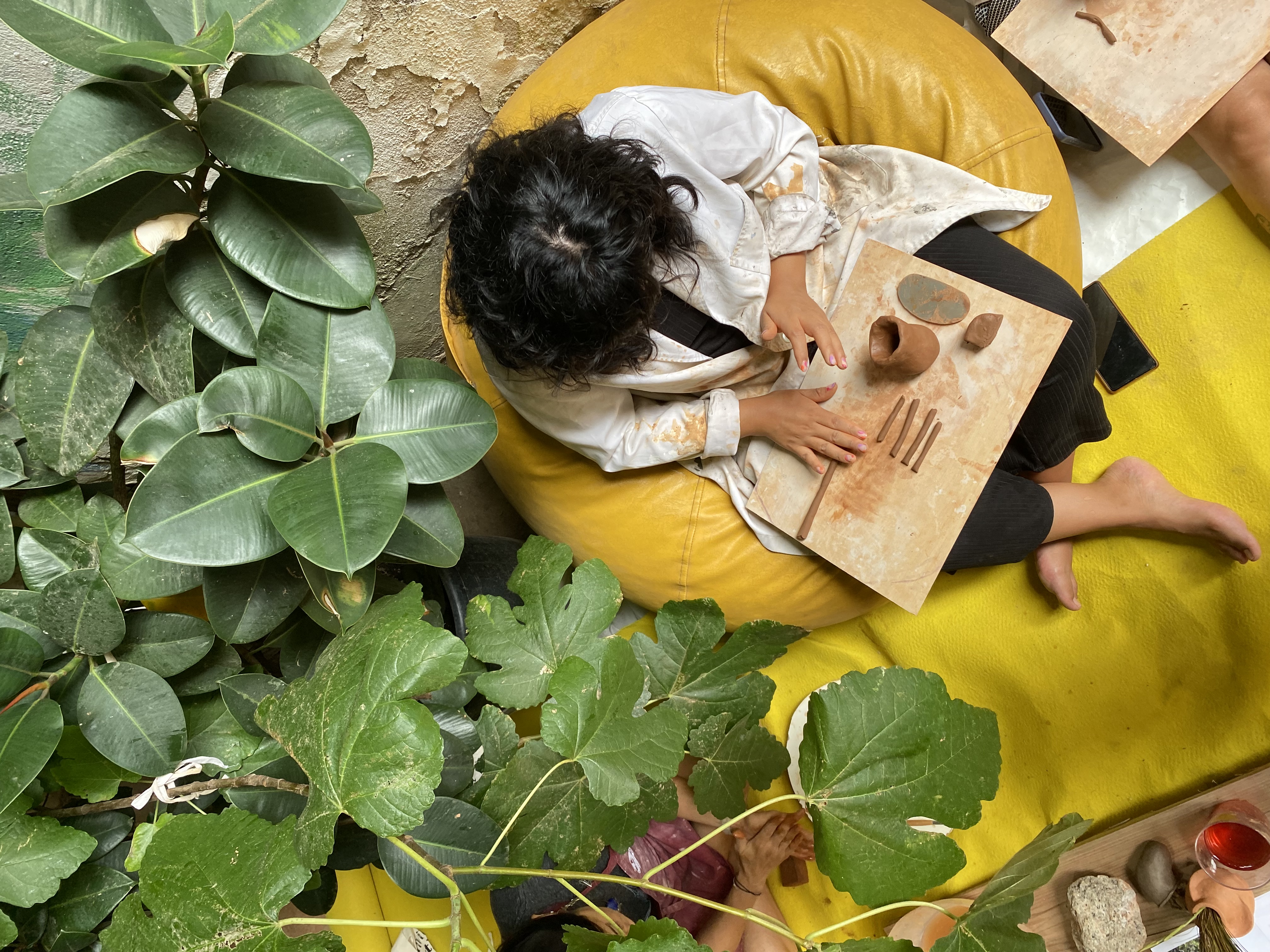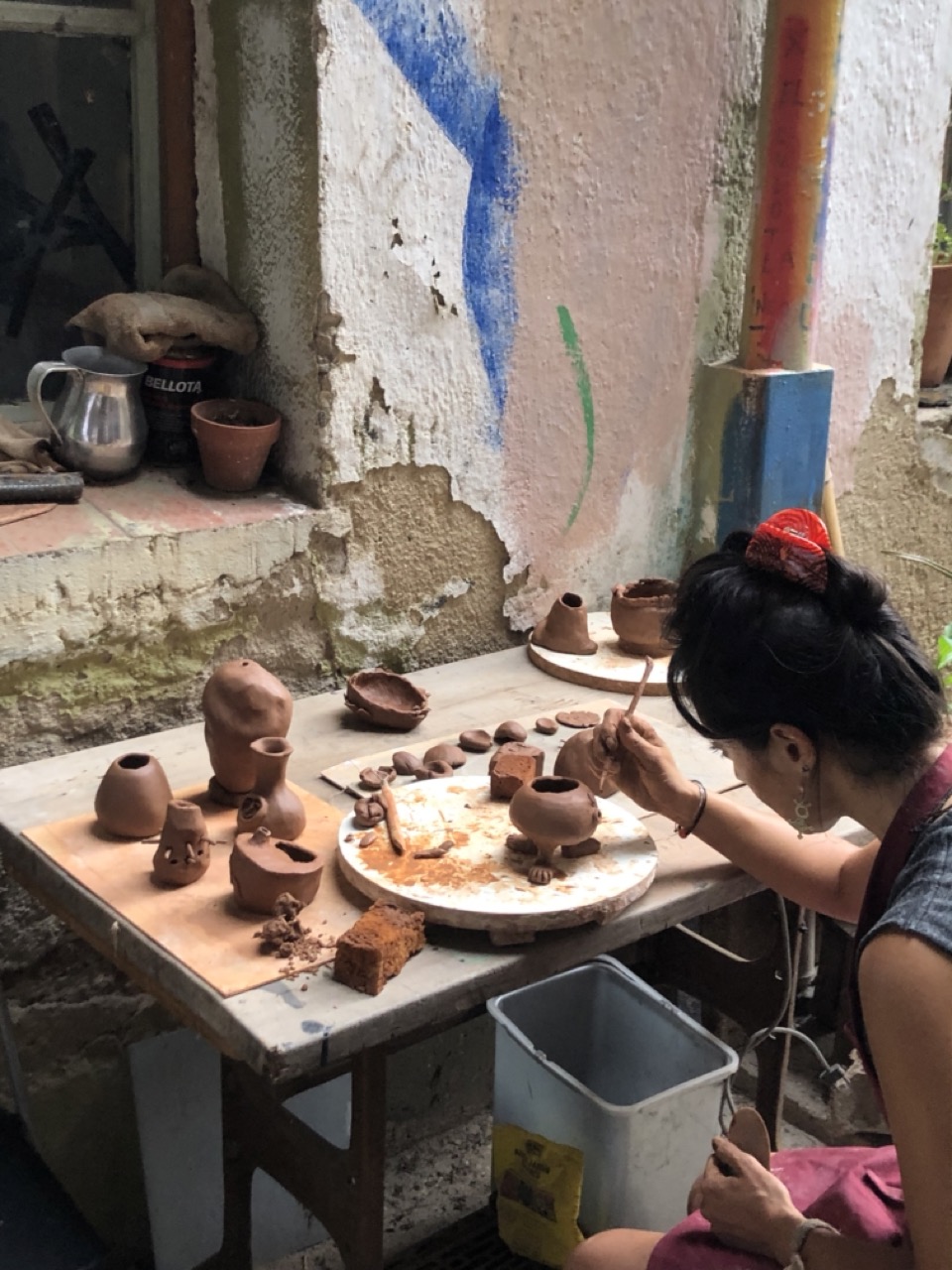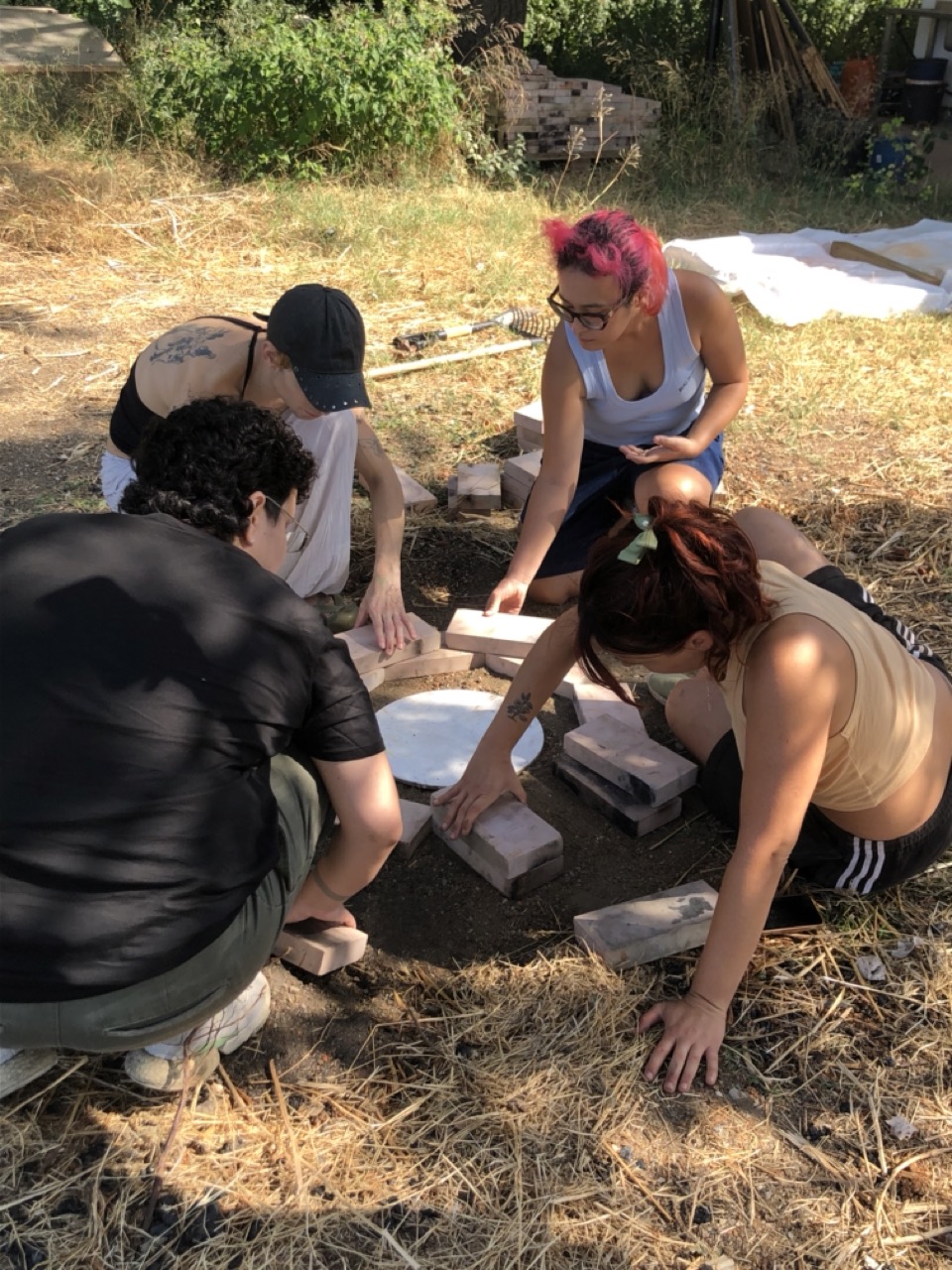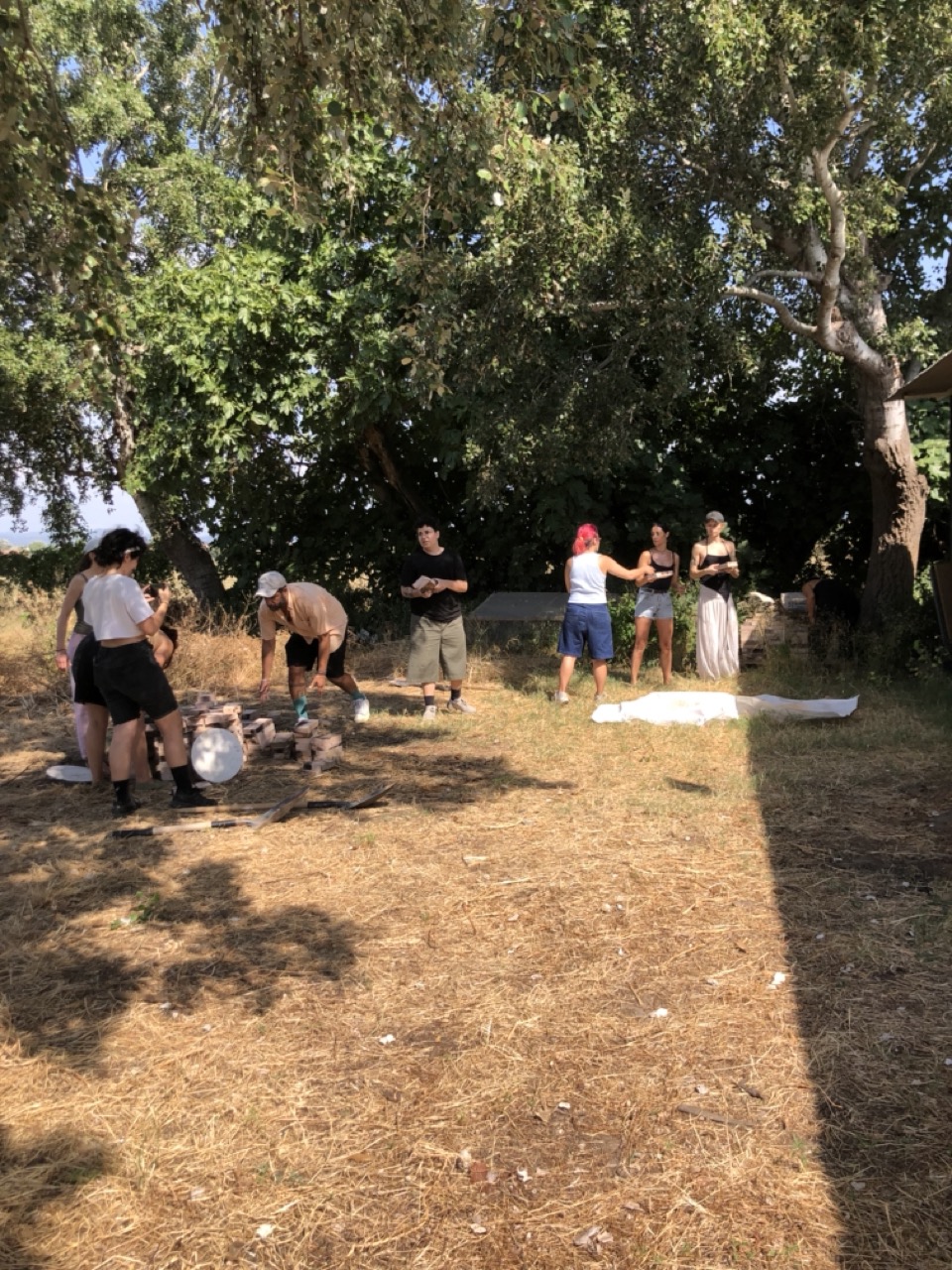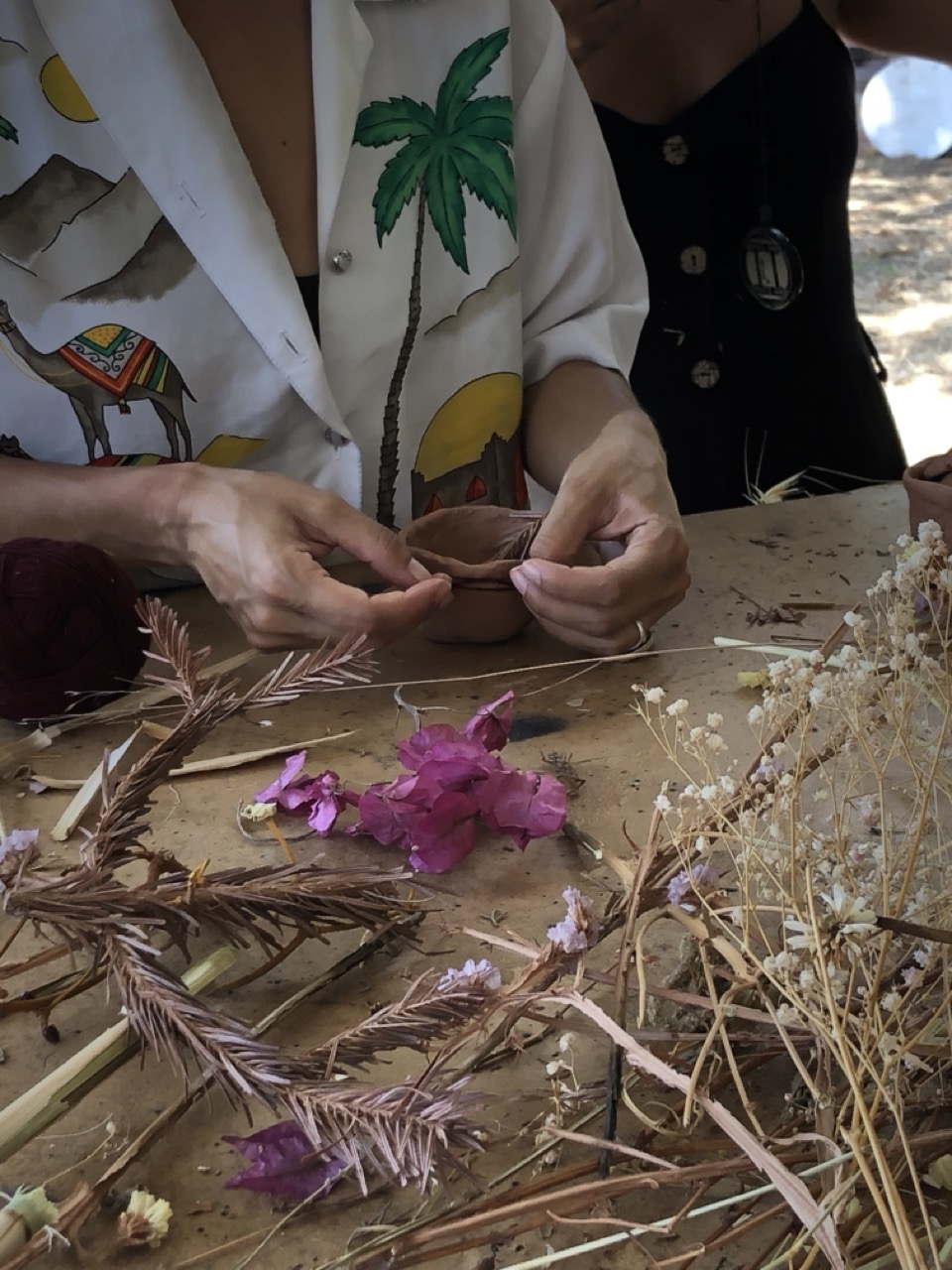vasijas para sembrar duelos / vessels for sowing grief
Barcelona, Cataluña, España | en proceso
En colaboración con Andi Icaza(residente La Escocesa 2023-presente). Becas de Investigación Artística Barcelona Crea para residentes.
Un proyecto que amasa los suelos que cargamos, los suelos que nos cargan, y los duelos que nos ayudan a navegar sus porosidades. Esta exploración inyecta ideas de continuidad y ciclos en dualidades y binarismos como vida-muerte, ausencia-presencia y suelo-cielo, desplazándose de la oposición hacia la relación.
El proyecto aborda el duelo en múltiples escalas, reconociendo que el dolor trasciende lo individual y se manifiesta en dimensiones colectivas, locales y globales. Considera el duelo personal como la experiencia de una ausencia presente y la búsqueda de sentido a través de rituales y memorias tanto individuales como colectivas. Reflexiona sobre los duelos incrustados en el imaginario de países marcados por el conflicto armado, la violencia y represión estatal, el desplazamiento forzado y el desmantelamiento intencionado de las estructuras sociales y cotidianas - realidades que además complican la idea de retorno para quienes están lejos. Contempla también el duelo por el desarraigo provocado por migraciones económicas, políticas o ambientales; por ese territorio físico que resguarda nuestras memorias personales y colectivas.
Piensa el duelo de la Tierra en un sentido amplio, vinculado a la emergencia climática y a los cambios radicales que esta crisis conlleva. Aquí, el duelo no se refiere únicamente a la pérdida humana, sino también a la transformación acelerada de los ecosistemas, la ruptura de equilibrios naturales y la modificación de paisajes que han sostenido tanto la vida humana como la más-que-humana. Este duelo se vive a diario en los cambios del clima, en los patrones agrícolas, en el acceso al agua y en la constante incertidumbre sobre el porvenir.
Conceptualmente, el proyecto se arraiga en la expresión coloquial del campo nicaragüense “sembrar muertos”, utilizada para referirse a enterrar a los difuntos. Es una frase cargada de sentido sobre la conexión entre muerte, tierra y ritual, especialmente en contextos rurales. La segunda base del proyecto es la investigación de Kevin Gonzales Hodgson sobre la iconografía de urnas funerarias Chorotega y Nicarao en Villa Tiscapa, Managua. Este sitio, con su relieve escarpado y fertilidad variable de sus suelos, forma parte de la cuenca volcánica del graben de Managua. Está impregnado de una historia funeraria prehispánica que entiende la muerte como parte de un ciclo vital continuo, en un paisaje sujeto a un cambio ambiental constante: terremotos, erupciones, tormentas y sequías.
La metodología de vasijas para sembrar duelo se despliega en varias fases, integrando aproximaciones teóricas y prácticas, exploraciones territoriales y talleres colectivos. El proceso se sustenta en la investigación experimental y la creación colectiva, utilizando la cerámica como medio para explorar la relación entre duelo, territorio y memoria. A través de una investigación material y simbólica realizada en Nicaragua y Barcelona, el proyecto busca conectar tradiciones precoloniales con los desafíos contemporáneos de la pérdida y la regeneración.
Barcelona, Catalonia, Spain | Jul 2025
In collaboration with Andi Icaza (La Escocesa resident 2023–present). Barcelona Crea Artistic Research Grants for residents.
A project that kneads the soils we carry, the soils that carry us, and the grief processes that help us navigate their porosities. This exploration injects ideas of continuity and cycles into dualities and binaries such as life–death, absence–presence, and earth–sky, shifting from opposition toward relation.
The project addresses grief at multiple scales, recognising that pain transcends the individual and manifests in collective, local, and global dimensions. It considers personal grief as the experience of a present absence and the search for meaning through rituals and memories, both individual and collective. It reflects on the grief embedded in the imaginary of countries marked by armed conflict, state violence and repression, forced displacement, and the intentional dismantling of social and everyday structures - realities that also complicate the idea of return for those far from home. It also contemplates the grief of uprooting caused by economic, political, or environmental migrations; grief for that physical territory that shelters our personal and collective memories.
It thinks through the grief of the Earth in a broad sense, linked to the climate emergency and the radical changes this crisis entails. Here, grief does not refer only to human loss, but also to the accelerated transformation of ecosystems, the rupture of natural balances, and the alteration of landscapes that have sustained both human and more-than-human life. This grief is lived daily in the shifts of climate, in agricultural patterns, in access to water, and in the constant uncertainty about what lies ahead.
Conceptually, the project is rooted in the colloquial rural nicaraguan expression “to sow the dead”, used to refer to burying the deceased. It is a phrase laden with meaning about the connection between death, earth, and ritual, especially in rural contexts. The second foundation of the project is Kevin Gonzales Hodgson’s research on the iconography of Chorotega and Nicarao funerary urns in Villa Tiscapa, Managua. This site, with its rugged relief and variable soil fertility, is part of the volcanic basin of the Managua graben. It is steeped in a pre-Hispanic funerary history that understands death as part of a continuous life cycle, within a landscape subject to constant environmental change: earthquakes, eruptions, storms, and droughts.
The methodology of vessels for sowing grief unfolds in several phases, integrating theoretical and practical approaches, territorial explorations, and collective workshops. The process is sustained by experimental research and collective creation, using ceramics as a medium to explore the relationship between grief, territory, and memory. Through material and symbolic research carried out in Nicaragua and Barcelona, the project seeks to connect precolonial traditions with contemporary challenges of loss and regeneration.
un taller en tres movimientos / a workshop in three movements
Barcelona, Cataluña, España | Jul 2025
Durante 3 sábados consecutivos propusimos una deriva entre la acción material, la lectura y la reflexión colectiva, trabajando el barro como cuerpo común y contenedor poroso de duelos en su con-formación material, simbólica y situada.
Barcelona, Catalonia, Spain | Jul 2025
For three consecutive Saturdays, we proposed a drift between material action, reading, and collective reflection, working with clay as a common body and porous container of griefs in its material, symbolic, and situated con-formation.
